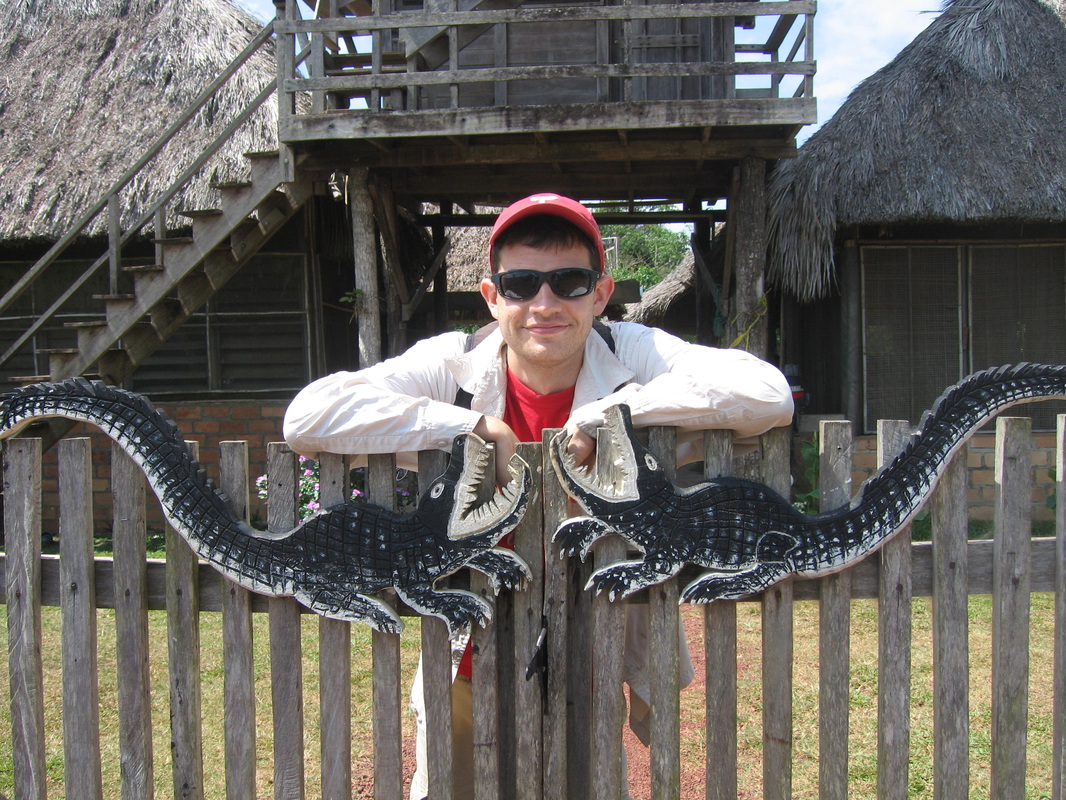|
-- Adam Rosenblatt Post-doc Some research sites are really hard to get to. Back in 2007 I worked for 6 months in Shark Bay, Australia as a volunteer on Mike Heithaus’ long-running research project, and getting there was a schlep. I had to fly from Philly (where I lived at the time) to LA, then to Auckland, New Zealand, then to Perth, Australia, then take a bus 10 hours up the Australian west coast to a gas station in the middle of nowhere called “The Overlander,” then take another bus for an hour to the research site, Monkey Mia. By the end your bones ache and your eyes are weary with uncomfortable fits of sleep, but the beauty and possibility of such a remote place overtakes you and quickly you forget about the hardships of the journey. I recently did some research in another remote part of the world: Guyana. It’s a country few have heard of, tucked away on the northern coast of South America, dwarfed by its giant neighbor Brazil. Yet Guyana boasts vast tracts of untouched forests and savannahs, and some of the highest biodiversity on the planet. Guyana’s wilderness is impressive and dense, and it has remained largely undeveloped precisely because not many people know where it is or are aware of its natural splendor. I headed down there, to Guyana’s interior savannahs, to do some research on the largest crocodilian in the western hemisphere: the black caiman. To get there, I flew from New Haven to Miami where I picked up some supplies and equipment, then on to Port of Spain, Trinidad, then on to Georgetown, Guyana’s capital city. After a few days spent in Town (as the locals call it) to get my research permits, I hopped on a tiny little plane that flew me to a dirt airstrip near the Brazilian border where I was picked up by my local research collaborators in a red dust-covered pick-up truck. We drove 45 minutes over rain-scoured dirt roads and through a 3 mile long forest to the village of Yupukari, which sits on a hill above the Rupununi River and Awarikuru Lake. The Kanuku Mountains are located just to the south, and you can easily see them from Yupukari. The view is particularly beautiful in the evening when the mountains take on a purplish glow as the sun sets. The village is made up of about 1000 Macushi Amerindians, one of the indigenous groups in the region. It’s a fishing village in the dry season and a hunting village in the wet season, and I was there to figure out what black caimans eat and what ecological roles they play in the area. My base of operations was the lovely Caiman House eco-lodge, a popular place for tourists to hang their hats as they explore the amazing birds, fish, reptiles, and mammals of the region. When I arrived I unpacked my things in my breezy room, checked the integrity of the mosquito net hanging over my bed, and headed to the kitchen for a meal of fresh-caught fish, rice, and the spiciest chili peppers I’ve ever encountered. I was in paradise, or at least one version of it, and I was excited to see what surprises the surrounding waters held in store for me.
Next time: Caimans, and lots of them.
262 Comments
|
Archives
November 2019
Categories
All
|






 RSS Feed
RSS Feed
